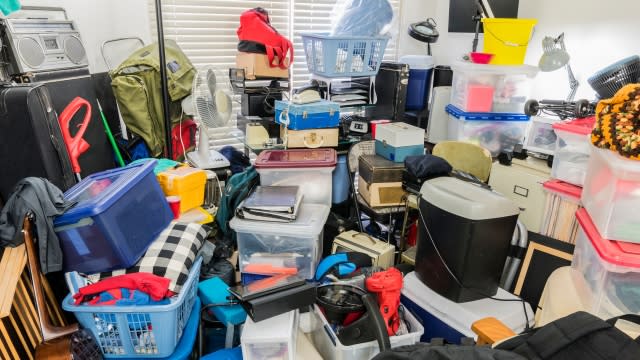Virtual reality shows promise for helping those with hoarding disorder

Researchers at Stanford Medicine are using virtual reality to help those who suffer from hoarding disorder.
Carolyn Rodriguez and her team created a virtual home using scans of participants’ actual possessions. These virtual environments were then loaded into a VR headset.
“They can actually practice letting go of items, and this can be a stepping stone to real-life discarding,” said Rodriguez, a professor at the Stanford University School of Medicine and director of the Hoarding Disorders Research Program.
“Individuals with hoarding disorder have difficulty letting go of their possessions. Letting go can range from discarding, donating, recycling, and that act of parting with their possessions causes them to have a lot of distress,” she said.
An estimated 2% to 6% of the population suffers from hoarding disorder, according to the International OCD Foundation.
Symptoms are almost three times more common in older adults.
Some symptoms of hoarding disorder include inability to get rid of possessions, extreme stress when attempting to throw out items, and not trusting others to touch your possessions, according to the Cleveland Clinic.
“The VR sessions were well-tolerated and participants found them useful. And nearly all of the participants then said that the VR actually helped them increase real-life discarding,” Rodriguez said.
“In many cases home visits are not feasible. Either individuals live too far away or their home has too much clutter, it’s above shoulder-level or higher, and it can be dangerous,” she explained.
The team completed a pilot study last year with 9 participants. Along with VR, participants attended 16 weeks of online group therapy that gave them hoarding-related cognitive behavioral skills. Seven of the nine participants showed improvement.
Rodriguez hopes as virtual and augmented reality technology advances, this will be more feasible to implement along with other therapies currently used to help hoarding disorder.
“The best evidence that we have supports cognitive behavioral therapy for hoarding disorder,” Rodriguez said.
She explained that if you have a loved one who deals with hoarding disorder, it’s important to express empathy and praise progress.
SEE MORE: Nearly 200 animals seized, Las Vegas couple charged for animal cruelty
